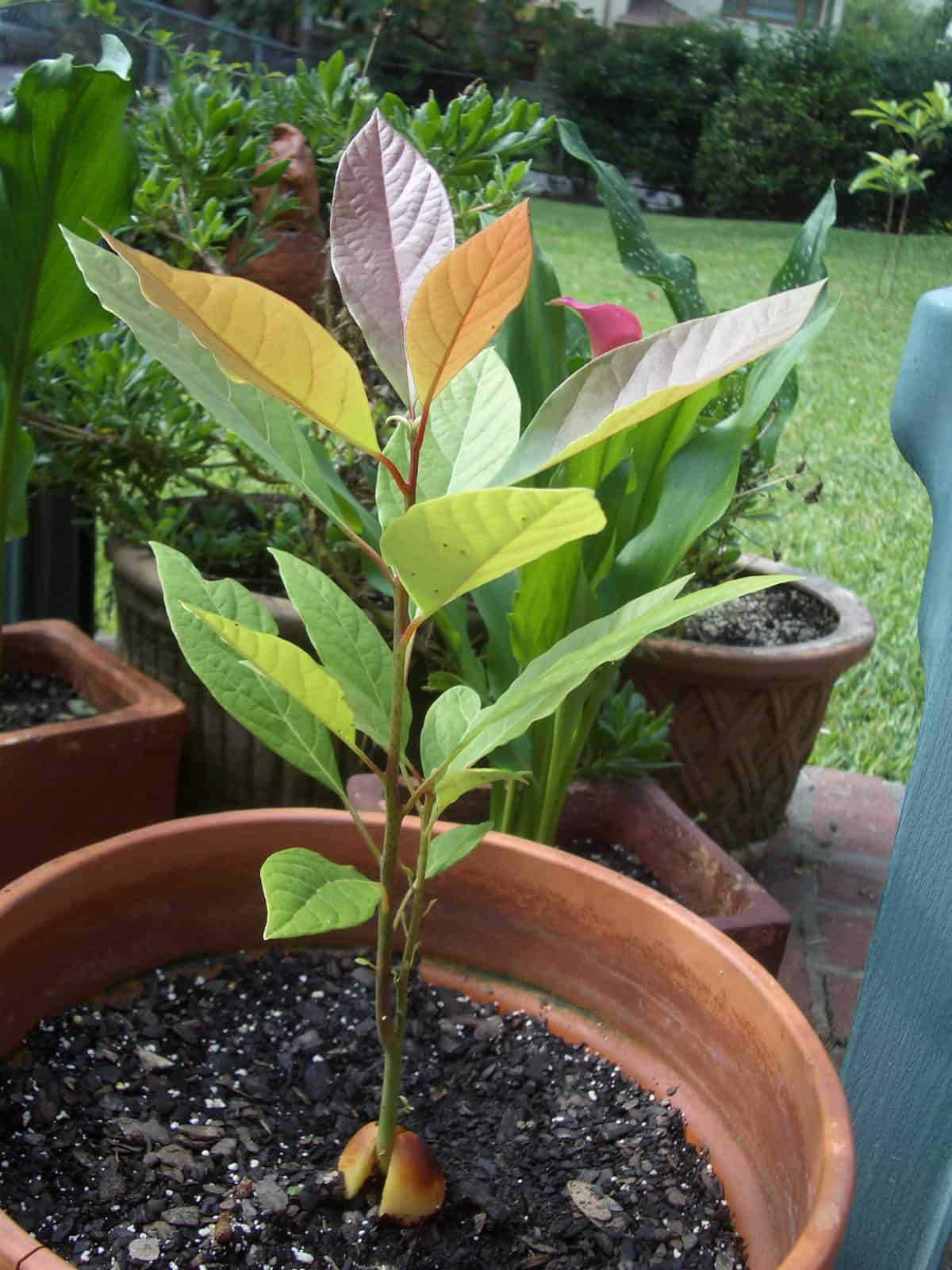Many people are interested in having their own avocado plant at home, but perhaps you don’t have enough space in your backyard to be able to plant this amazing tree.
But don’t worry today, I’m going to show you how to plant an avocado tree in a pot. Which you will be able to grow in any type of house.
But first, let me give you some details about the avocado tree.
The avocado is a species of tree that belongs to the genus Persea, which is included in the Lauraceae family, whose fruit, the avocado, is edible.
It is a species native to Mesoamerica, specifically Mexico and Guatemala.
In the wild, the avocado tree can reach heights of around 20 m, (more commonly between 8 and 12 m), and a diameter of 30 to 60 cm, with an erect or crooked trunk.
Its leaves are wide and deep green.
How to grow avocado in a pot?
There are two ways of growing an avocado tree by seed, or to purchase a semi-grown tree is your choice; if you’re looking to enjoy the process, I recommend you go by seed.
If you really need to have it now, go ahead and purchase one in a pot.
Either way, here is how to grow and care for it.
Seeds
The first thing I will teach you is how to germinate the avocado seed to be able to sow it in a pot. Just follow the next steps.
1.Remove the avocado pit and clean it perfectly (only with water) until the seed is smooth.
2.Now, you will have to make three holes in the avocado pit and insert three toothpicks in the middle of the avocado to serve as support.
3.Fill a glass with water and submerge the seed but only to cover half the seed. And make sure that the dotted part is facing up, and the round part is facing down, submerged in the water.
4.Make sure that the seed is always with water to cover half of the seed. The seed will take 2-4 weeks to germinate.
5.Once it begins to germinate, you must change the water every two days to avoid the formation of fungi.
6.When you begin to see that the seed has germinated and roots are already growing, it is time to sow the seed in the pot.
7.Locate the plant in a place where it receives a good amount of sunlight.
-Once the plant reaches 15 cm you must cut the plant in half. This will help the plant grow stronger.
Avocado tree care
Watering
Avocado trees usually need to be watered two to three times a week, as it is a tropical plant.
As the roots spread through the soil, more water can be watered, but less frequently. The frequency of irrigation can decrease to once a week after one year from the planting of the avocado.
Moisten the soil well at the time of watering; just avoid puddles. Don’t let the soil dry out 100% before watering again.
Substratum
The plant must have the appropriate soil. Avocados like acid soils whose PH is between 5 and 7, which allows them to absorb more nutrients and have better growth.
It is also very important that the soil has good drainage. Make sure to mix the soil well so that it is loose and allows the plant to develop well, especially in its early stage.
Illumination
The plant needs to receive daily sunlight. If you have it outside, it’s advised to bring it inside your home during winter and to place it next to a window where it will receive sunlight.
Temperature
The optical maturity of avocados occurs at temperatures between 18ºc and 24ºC. Colder or warmer temperatures are less ideal.
Fertilizer
During the entire growing season, and being a tree whose fruits are edible, it must be fertilized using organic products, such as guano or manure, adding a layer of 2 to 3 cm thick around the trunk once a month.
If your plant is young, you can use liquid fertilizer, guano being especially advisable for its rapid effectiveness; you must follow the instructions specified on the packaging to avoid the risk of overdose.
Pruning
Only those branches that grow close to the ground, weak and diseased branches, should be removed in early spring.
Harvesting the fruit
In 3 to 5 years (from sowing) you can start to collect its fruits.
Transplant
It is important to transplant your avocado plant at least every two years or when you notice that your plant no longer has enough room to grow.
Use a pot 3 to 4 cm larger than the plant and renew the substrate; just make sure that the substrate is adequate and that it drains well. You can also add compost at transplant time to give the plant new nutrients.
